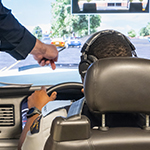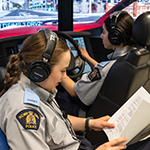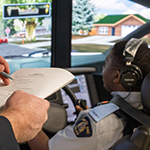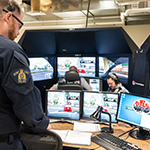Driving Simulator Unit

To complement and enhance the skills learned
Police officers have to think about a lot of things while driving—like the environment, responding to calls, conducting risk assessments, formulating plans, etc. This makes driving a challenging task.
To help, the RCMP Academy uses eight driving simulators during training. They have an adjustable seat with a seatbelt, a dashboard, and controls for lights, sirens, and the police radio. Three screens mimic the view out the front and side windows, and there’s a rear-view mirror view too. They can simulate different weather conditions and types of vehicles, changing how the car handles.
The eight simulators are in two groups of four, called "pods." Each pod has a control console where a facilitator can see what each driver sees, set up different scenarios, and change weather and vehicle settings. The operator can also check the speed, RPM, acceleration, braking, emergency lights, and seatbelt status for each simulator.
The training cadets receive in the driving simulators is intended to complement and enhance the skills learned in the Police Driving Unit. These simulators help cadets practice driving while thinking about other things. They don’t teach how to drive but how to think while driving. Simulators can also create driving situations that are too dangerous to practice in real life, like driving through busy intersections during emergencies.
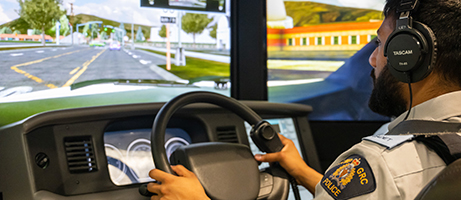
- Date modified:
